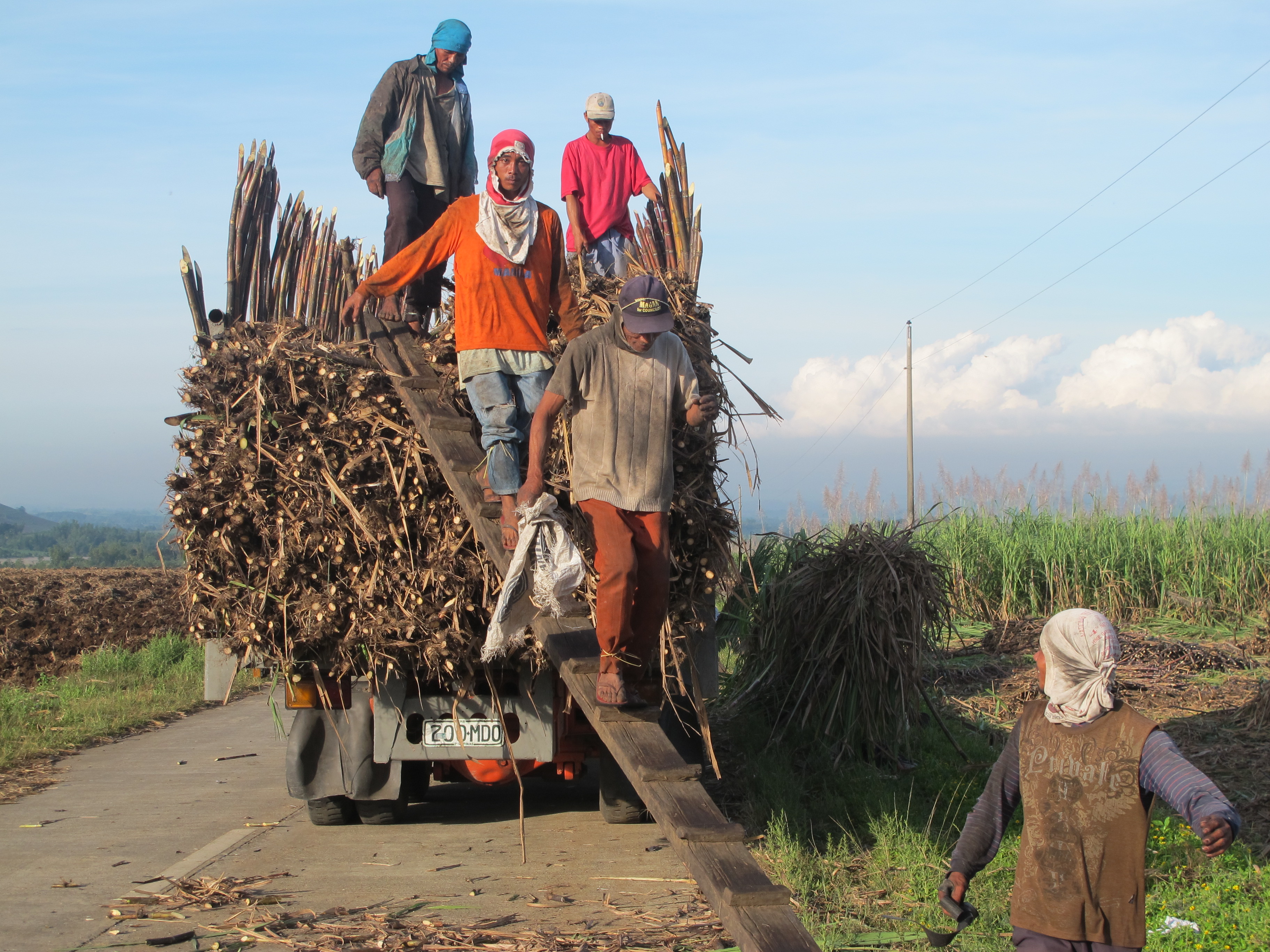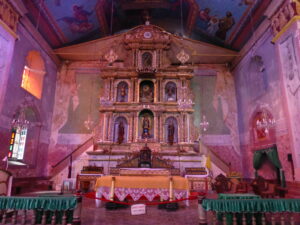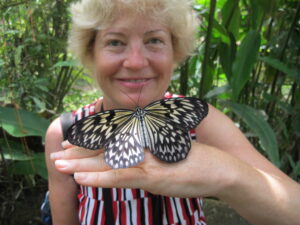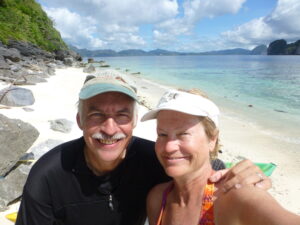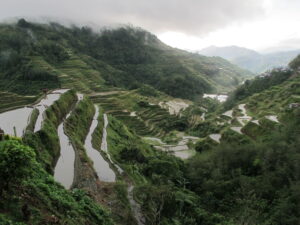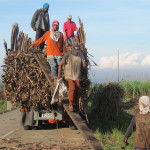
The old farm trucks we passed on the road, with some difficulty, were precarious, jouncing up and down on well-worn shocks, and teetering from their top heavy loads of sugar cane.
They’re basically narrow flatbeds with a three-meter tall bamboo cage on them. To load them, workers shoulder large cords of cane, walk a rickety gangplank onto the flatbed and pile the bundles all the way to the top. Since the truckers profit from carrying as large a load as possible, delivered as quickly as possible, the trucks are completely filled before they leave the fields for the refineries.
Stacked solid, the trucks become both slow and very unstable. At best, the seemingly limitless numbers of them clog the roads as they rumble from the fields to the larger refineries around the island (longer distances now that the smaller, local refineries have been squeezed out of the business). At worst, if they swerve to avoid a road obstacle or slide out on dewy roads, they easily roll over. Frequently during the harvest season, trucks dump their load of cane onto the narrow two lane roads. That heap stays there until someone can be bothered to move it or repack it. Traffic stalls, or slows to a crawl, while the obstacle stays.
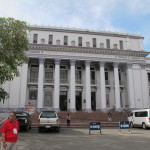
Even without the trucks to deal with, we had a lot of dead time when we drove across Negros Island – an arduous experience we’d become accustomed to in the Philippines. It’s a boot-shaped island just 200 or so kilometers north to south, and an average of 50 kilometers across. Yet our trip between its two major cities, Dumaguete on the southeast coast and Bacolod on the northwest coast, took about five hours as we climbed up and over the volcanic spine of the island. Even that’s quite fast compared to travel historically. Crossing the island was so difficult that the tribes on the eastern and western sides of the spine spoke separate languages. By the late 19th century, that split was formalized administratively as Negros Oriental to the east of the spine and Negros Occidental to the west. The name itself comes from the how dark the people’s skins seemed to the Spanish back in the 16th century. Despite easier access across the mountainous center, the districts remain separate still: in Bacolod, we visited the impressive art-deco governmental center of Negros Occidental built in the late 1920s and still used today.
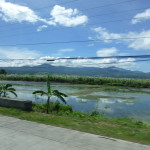
The most pleasant sections of that drive were the coastal roads stretching out from the cities, curving along gentle coastlines and past palm-fringed beaches.
Away from the coast, we occasionally passed a village, where we could enjoy a glimpse of its activity. In one, a few women did the washing in tubs filled from roadside hoses carrying run-off from the steep hillsides. Nearby, some men were loading motorcycles with impossibly bulky goods. Down the road, a large gathering of mothers and their babies convened under a bamboo shelter for some purpose we couldn’t fathom. One man passed them, hauling a large tree trunk on his shoulder. Next to the shelter, brahma bulls fed on the grassy margins of the road.
Otherwise, as is typical in Filipino cities, we spent a lot of the time crawling dully along in the thick, diesel-scented traffic of the towns. And then there was the unrelieved repetition of field after field of sugarcane – some growing thick, some partly cut and some mere stubble soon to burn to re-fertilize the soil.
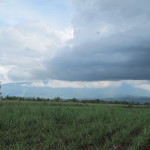
We began to call the island Sugarland. Though cane has been a crop here even before the Spanish arrived, Basques and Spanish introduced large-scale production. By the late 18th century. sugar cane had become the island’s cash crop and a mainstay of the Philippines. Cane growers found optimal conditions on Negros Island – just the right heat and regular, but minimal afternoon watering. As a source of great wealth, cane bred vicious competition and also great social conflict from the laborers in the fields. Sugarland has had a bitter history too.
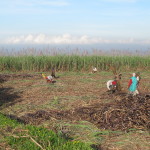
Cane growing and, in particular, harvesting has long needed throngs of worker, doing hard labor in the fields during the season. In one field, we watched dozens of workers clearing a field, a scene repeated over and over during our drive across Negros Island. At mid-morning, they had already bent down for hours in the searing heat of the valleys, slashing the stalks, tying bundles and hauling them into the trucks, then clearing cane debris left over. By the time we saw them, their skin and clothes were blackened by the sugar, seemingly caramelized by the damp and the heat. It was brutal work. We wondered whether we ever could use sugar again, knowing what it took to supply it.
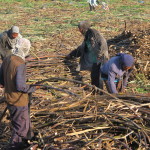
Yet it has been a livelihood for so many, both locals and imported labor. Though working mercilessly in the six or seven month harvest season, the local field hands typically had nothing to do in the off-season, a part of the year that came to be called tiempo muerte or dead time. Most laborers had no alternative income or land they could work to fill in the dead time; idle hands made for restless and irritable people. Eventually, the landowners realized they needed to make a change, so they began to provide workers some land to grow other cash and sustenance crops during the dead time.
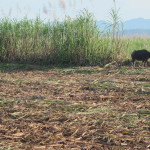
On some cane plantations, families of owners and workers grew up together, creating bonds of friendship and mutual need. Now there is much concern about the free trade agreements with other Pacific nations to take effect in 2015, agreements which include sugar trade. The labor intensive methods of the Filipinos will need to confront the more productive, automated methods of other countries like Thailand, even with the low wages common here. Cane producers may have to choose between automating to keep their prices low or retaining workers until the owners are squeezed out of world markets. In one way or another, this economic mainstay of Negros Island might be threatened.
Meanwhile, whatever happens on a regional scale after 2015, the trucks for now keep bumping and grinding along, clogging the highway arteries of the island. And they’ll probably keep doing so, in part to supply sugar for two Filipino passions, Coca-Cola and the local “rhum” Tanduay (Tan-dew-eye). Not surprisingly, on the outskirts of Bacolod, two huge processing plants sit within a half kilometer of each other: one a Coca-Cola plant, the other a plant for Tanduay, the second largest rum producer in the world.
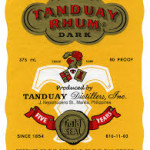 Tanduay’s quarter-liter bottles (costing a dollar usually for its unaged “well” rum) and three-quarter liter bottles (costing two dollars) are available almost everywhere in the Philippines, from the tiniest village convenience store to premium shelf space at the extensive chain of 7-11 stores. (In finer liquor stores, even the 12 year old top-shelf stuff costs just four dollars.)
Tanduay’s quarter-liter bottles (costing a dollar usually for its unaged “well” rum) and three-quarter liter bottles (costing two dollars) are available almost everywhere in the Philippines, from the tiniest village convenience store to premium shelf space at the extensive chain of 7-11 stores. (In finer liquor stores, even the 12 year old top-shelf stuff costs just four dollars.)
We hoped that a pipeline ran between the two Bacolod plants so they could process a mix of rum and coke for their thirsty customers. That would be “sweet”!
(Also, for more pictures from the Philippines, CLICK HERE to view the slideshow at the end of the Philippines itinerary page.)


